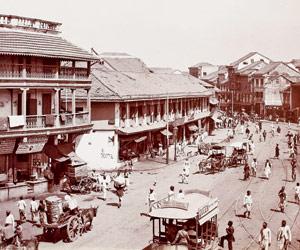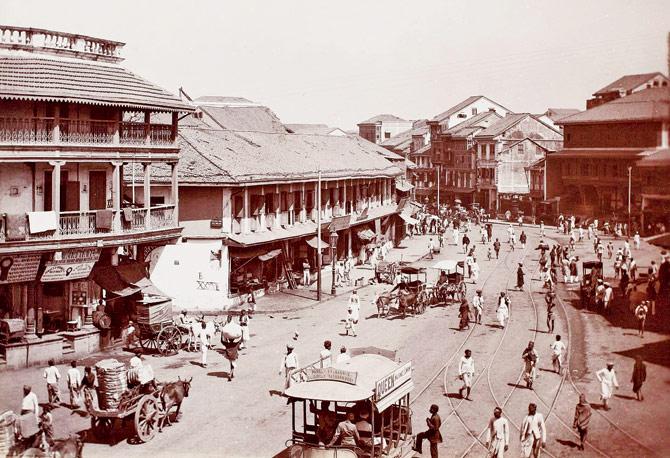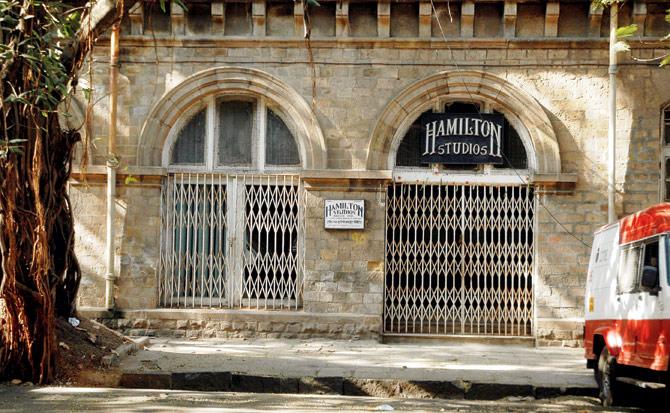Learn all about the 19th-century photographic studios of Bombay at this walk curated around an ongoing exhibition that delves into the history of India through iconic frames


Bombay, Pydoni Bazaar, unknown, 19th century. Pics courtesy/The Sarmaya Collection
Man's fascination for creating life-like impressions of himself and the world around him dates back to prehistoric times when he would depict his story through cave paintings. Down the centuries, the art continued to evolve through realistic portraits and landscapes, and then came the watershed in 1839, with the birth of photography.
Barely two decades later, photography made its way to India when the British East India Company brought well-known European photographers to document their conquests in the prized colony. One of the first such commissioned projects was the documentation of the aftermath of the Indian Mutiny of 1857, which Felice Beato, credited as the first war photographer in the history of photography, captured. This and many more such fascinating nuggets of history are part of the ongoing exhibition, Portrait of a Nation, A Nation in Portraits. The debut exhibition of Sarmaya, a repository of art, artefacts and living traditions from the Indian Subcontinent, it delves into the history of India through the lens of the history of photography. Beginning with 1857, the photographs capture Indian royalty, the everyday life of the common folk, monuments as well as landscapes till the turn of the 20th century.

Panorama of Bombay captured by Samuel Bourne in 1870
Bombay and Calcutta, being two major urban centres in British-ruled India, were at the forefront of this development. This Saturday, as part of a walk curated around the exhibition, historian Dr Simin Patel, who runs Bombaywalla Historical Works, will take participants through the rise of the photographic studio in Bombay.
"I had the fortune of seeing the brilliant collection before the exhibition was put up. Since some of the photographs are of places that the residents of the city still visit, like Marine Drive and Victoria Terminus (now CST), we thought of another way of engaging the viewer. At the back of the prints were the names of the photographers and the logos of the commissioned studios. We sifted through the archives to find out the locations where the studios once stood," shares Dr Patel.

The walk begins with a tour of the sites of the photographic studios such as Lindley & Warren
The walk begins in the Fort district with a tour of the sites of the studios established in the 1860s and '70s. "Lindley & Warren were known for their carte de visite series, which can be compared to modern-day visiting cards with the addition of photographs. The focus of Bourne & Shepherd studio, whose founding partner was Samuel Bourne, one of the greatest photographers of the 19th century, was monuments," explains Dr Patel.
The walk will then move to sites of the studios that were set up in the 1890s such as Raja Deen Dayal & Sons and Vernon & Co. The former was housed in the Whiteaway Laidlaw building in Fort, where Khadi Bhandar stands today. The participants will also make a stop at the Hamilton Studios in Ballard Estate — where actor Zeenat Aman is said to have been discovered — to get a feel of a historic studio space with its props, equipment and records. The walk will culminate in a visit to the exhibition.

The iconic Hamilton Studios at Ballard Estate is also a stop
In their heyday, the studios had become aspirational destinations, where visiting royals from all over India would come to get photographed. "Studios would also vie to get an affiliation with the colonial government so that they would be appointed to photograph important officials and events," adds Dr Patel.

Dr Simin Patel
Unfortunately, the studios, barring Hamilton, haven't been given their due in the role they played in Mumbai's history, feels Dr Patel. After all, this was also the time when women were coming out of domestic confines and being photographed, like a Parsi widow, Meheribai, who will feature in the walk. Paul Abraham, founder of Sarmaya, sums it up aptly, "Today when we use our mobile phones and click away, we forget that once upon a time, every photograph was an adventure."
On: February 3 and 24, 9.30 am
Meeting point: Fort (details to be shared upon registration); The exhibition is on at Pundole's, Hamilton House, Ballard Estate.
Register: walks@bombaywalla.org (limited seats)
Catch up on all the latest Mumbai, National and International news here
Download the new mid-day Android and iOS apps to get updates on all the latest and trending stories on the go
 Subscribe today by clicking the link and stay updated with the latest news!" Click here!
Subscribe today by clicking the link and stay updated with the latest news!" Click here!









